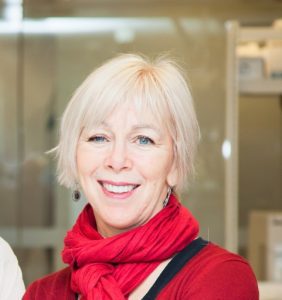
Keynote Lecture:
Freda D. Miller, PhD
Senior Scientist at The Hospital for Sick Children Research Institute
Professor at the University of Toronto
Howard Hughes Medical Institute International Research Scholar
Canada Research Chair in Developmental Neurobiology
Fellow of the Royal Society of Canada
Fellow of the American Association for the Advancement of Science.
Dr. Freda Miller’s laboratory studies how neurons are born, grow, develop and sometimes die in embryos to produce a network of neurons that is able to respond and react to the environment in the appropriate way. When this network is damaged, either through spinal cord injury or disease, such as Parkinson’s, knowing the factors involved in its growth could lead to new avenues of treatment.
Major findings from the Miller lab include:
- Evidence that adult mammalian skin contains an accessible multipotent dermal stem cell that can generate peripheral neural cells
- The demonstration that proteins called p75 and p63 play a critical role in determining the life, death and degeneration of mammalian neurons, and
- The finding that one way genetic disorders cause cognitive dysfunction is by perturbing embryonic neurogenesis.
By identifying the factors involved in neuron development, and showing that cells from the skin can be converted to neurons in specific conditions, Dr. Miller has opened new avenues of investigation that could lead to novel treatments for diseases, disorders, and injuries that disrupt the normal functioning of the nervous system.
View Freda Miller’s profile at SickKids: http://www.sickkids.ca/AboutSickKids/Directory/People/M/Freda-Miller.html
Selected publications:
Voronova A, Yuzwa SA, Wang BS, Zahr S, Syal C, Wang J, Kaplan DR, Miller FD. Migrating Interneurons Secrete Fractalkine to Promote Oligodendrocyte Formation in the Developing Mammalian Brain. Neuron. 2017 May 3;94(3):500-516.e9. doi: 10.1016/j.neuron.2017.04.018.
Yuzwa SA, Yang G, Borrett MJ, Clarke G, Cancino GI, Zahr SK, Zandstra PW, Kaplan DR, Miller FD. Proneurogenic Ligands Defined by Modeling Developing Cortex Growth Factor Communication Networks. Neuron. 2016 Sep 7;91(5):988-1004. doi: 10.1016/j.neuron.2016.07.037.
Johnston A.P.W., Yuzwa S.A., Carr M.J., Mahmud N., Storer M.A., Krause M.P., Jones K., Paul S., Kaplan D.R., and Miller F.D. Dedifferentiated Schwann cell precursors secreting paracrine factors are required for regeneration of the mammalian digit tip. Cell Stem Cell. 2016 Oct 6;19(4):433-448. doi: 10.1016/j.stem.2016.06.002. Epub 2016
Wang J., Gallagher D., DeVito L.M., Cancino G.I., Tsui D., He, L., Keller G.M., Frankland P.W., Kaplan D.R., and Miller F.D. Metformin activates an atypical PKC-CBP pathway to promote neurogenesis and enhance spatial memory formation. Cell Stem Cell 11, 23-35 (2012).
Singh K.K., Park K.J., Hong E.J., Kramer B.M., Greenberg M.E., Kaplan D.R., and Miller F.D. Developmental axon pruning mediated by BDNF:p75NTR-dependent axon degeneration. Nat. Neurosci. 11, 649-658 (2008).
Toma J.G., Akhavan M., Fernandes K.J.L., Fortier M.P., Barnabé-Heider F., Sadikot A, Kaplan D.R. and Miller F.D. Isolation of multipotent adult stem cells from the dermis of mammalian skin. Nature Cell Biol. 3, 778-784 (2001).
Pozniak C., Radinovic S., Yang A., McKeon F., Kaplan D.R., and Miller F.D. An anti-apoptotic role for the p53 family member, p73, during developmental neuron death. Science 289, 304-306 (2000).
View More recent publications by Freda Miller on PubMed
